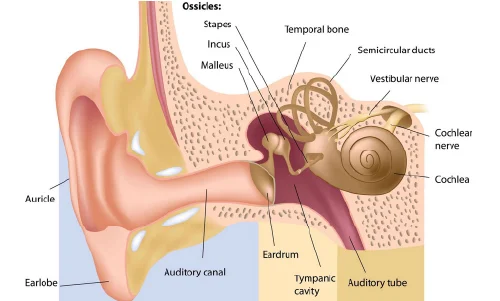Tympanoplasty, a surgical procedure aimed at repairing a perforated eardrum, addresses complications such as conductive hearing loss, recurrent ear infections, and compromised middle ear function, restoring auditory health effectively. If you're considering a tympanoplasty, reach out to us, or book a direct appointment with our ENT specialist. At the CK Birla Hospital, we are dedicated to ensuring that your tympanoplasty (perforated eardrum repair surgery) is as safe, comfortable, and effective as possible. We're here to guide you every step of the way toward a successful recovery.

If a tympanoplasty is not done timely and properly, several risks and potential complications may arise:
Tailored to specific ear conditions, tympanoplasty encompasses various types, like:
Selection depends on factors like perforation size, middle ear health, and the patient’s overall condition. Surgeons assess these factors to recommend the most suitable tympanoplasty type.
The cost of a tympanoplasty varies as per the specific type advised by a healthcare provider, such as:
Generally, the cost of tympanoplasty in Delhi is approximately ranges from Rs. 50,000 to Rs. 90,000, depending upon numerous factors, such as the surgeon’s experience, location, length of the treatment, and the hospital’s price structure.
To get an explicit estimate for the cost of tympanoplasty at the CK Birla Hospital, contact the hospital directly. Additionally, you can consult with our board-certified ENT specialist to discuss your specific needs and receive a personalised quote for the procedure.
Before a tympanoplasty, diagnosis involves:
Tympanoplasty aims to repair the damaged eardrum and restore hearing, making accurate diagnosis crucial for determining the appropriate surgical intervention.
Tympanoplasty is a surgical procedure to repair a perforated eardrum or reconstruct the middle ear bones to improve hearing and prevent recurrent infections or other complications.
Someone might need tympanoplasty surgery to repair a perforated eardrum caused by trauma, infection, or chronic ear infections, restoring hearing, preventing infections, and alleviating related symptoms.
Common reasons for tympanic membrane perforation include trauma (such as from a sudden loud noise or injury), chronic middle ear infections, barotrauma (pressure changes), and insertion of objects into the ear.
Tympanoplasty Surgery involves making an incision behind the ear, accessing the eardrum, repairing any perforations with graft material, and reconstructing the middle ear structures if necessary, often under general anaesthesia.
Tympanoplasty is generally successful in restoring hearing, with success rates ranging from 70% to 90%, depending on factors such as the size and location of the perforation and underlying conditions.